PROTECT YOUR DNA WITH QUANTUM TECHNOLOGY
Orgo-Life the new way to the future Advertising by AdpathwayThere seemingly aren’t enough superlatives for dahlia flowers and their wideranging floral forms. Their near-perfect, highly intricate petal arrangements, symmetry, and shape, from tidy and formal to wild and loose, make a dramatic spectacle wherever they grow.
Dahlias are a long-time favorite with a lasting season of color, whether as petite pompons or towering dinnerplates.
Dahlias, depending on the variety and planting time, typically flower from mid-summer through frost. With a few pruning tricks, we can promote more blooms, a longer-lasting show, full plants, and vigorous tubers. The increase in stunning blooms is worth the extra attention.
Follow this guide to prune your dahlias for more blooms.
Decorative Double Blend Dahlia Seeds
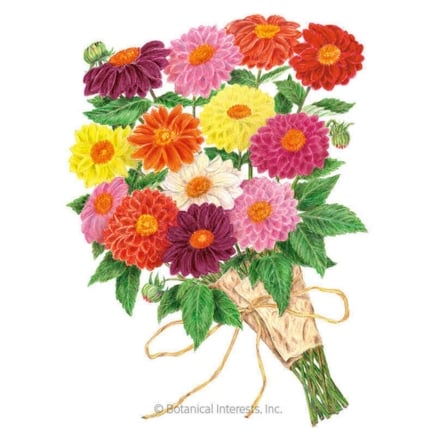
- Tall plants with vibrant, colorful blooms
- Long stems perfect for cut flowers
- Blooms about 90 days after sowing
- Perennial in zones 7–10
- Attracts pollinators
Dahlia Overview
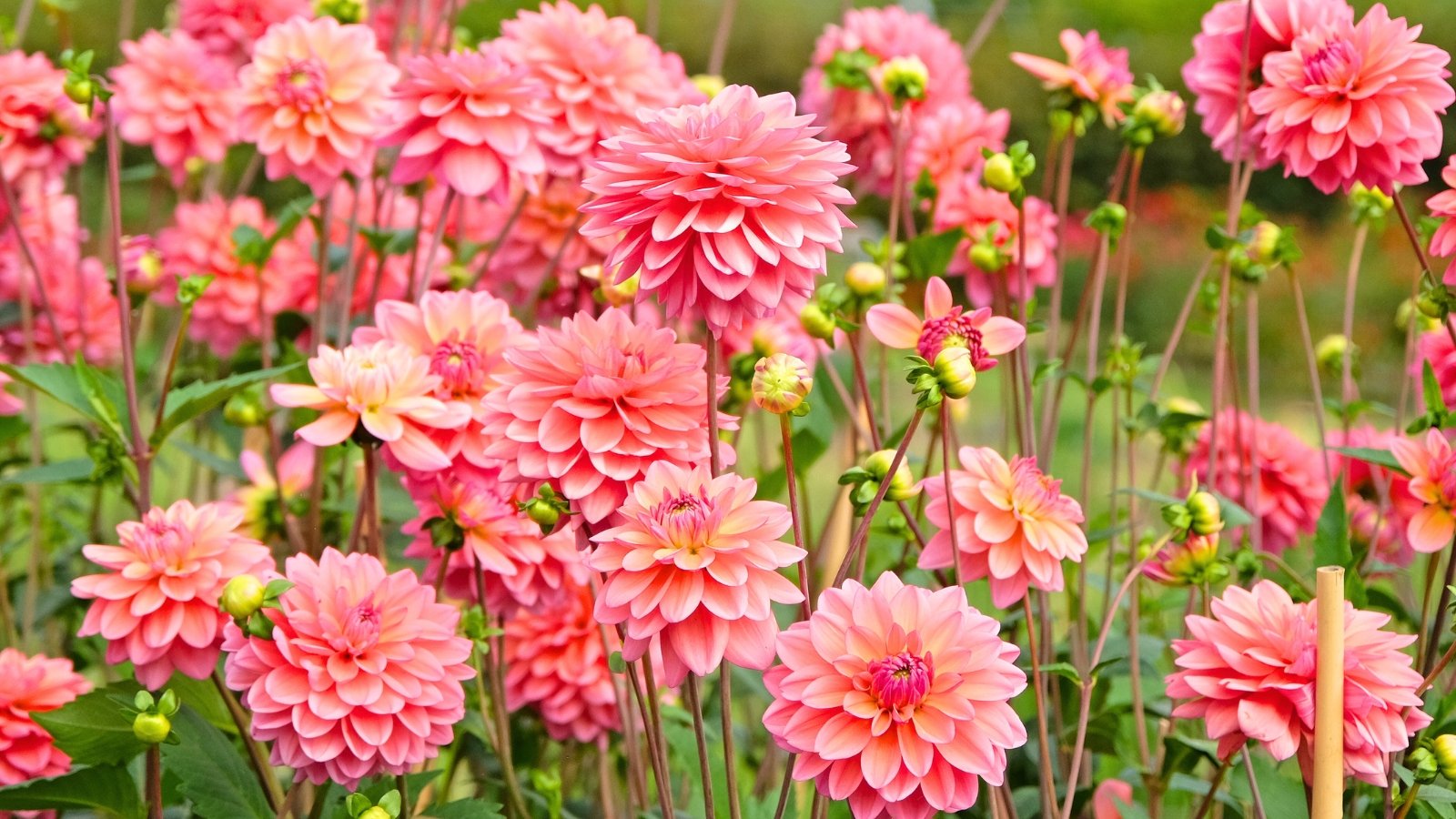 Grows from little tubers with surprisingly bold results.
Grows from little tubers with surprisingly bold results.Dahlias stem from nubby tubers. The roots and shoots sprout from “eyes” on the starchy root structures. While hardy in USDA zones 7-10, they need winter protection or digging and storing in colder climates.
They also grow well as annuals, especially with pre-sprouting in areas with short growing seasons. Frost-sensitive, dahlias die back and enter winter dormancy as temperatures drop in the fall to reemerge in spring.
Dahlias prefer cool nighttime temperatures and warm days to grow and flower. They take a long time to flower, at about 100 days after planting, and require a bit of maintenance for the best vigor. Basic pruning added to the dahlia protocol takes the blooms a long way.
Types of Dahlia Pruning
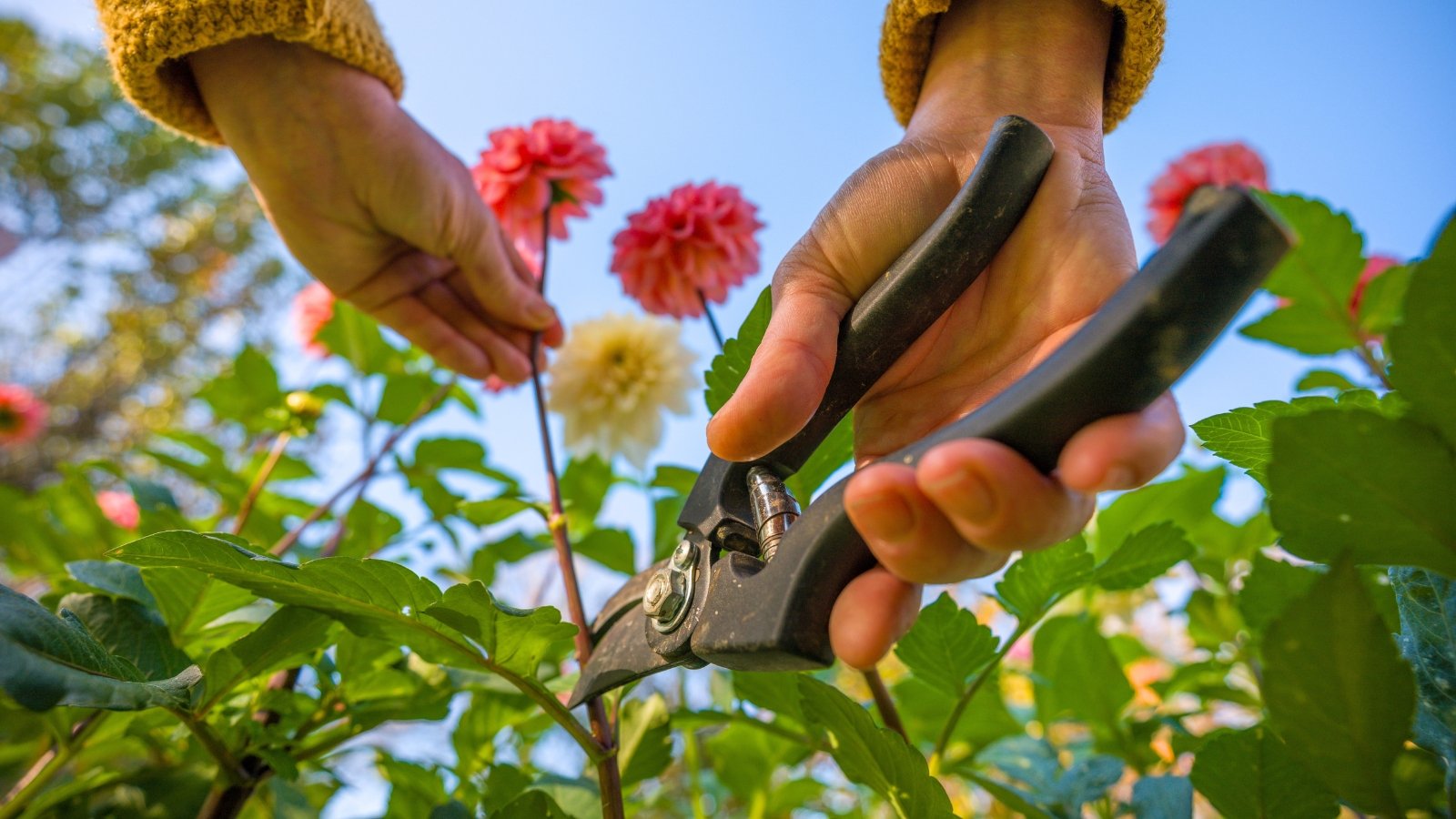 Pruning can bring either many blooms or bold singles.
Pruning can bring either many blooms or bold singles.Depending on the plant qualities you want to bolster, dahlias benefit from light pruning as they grow. Standard dahlia pruning techniques include pinching/topping, disbudding, and deadheading.
Pinching, or topping, promotes fuller plants with a leafier, less leggy habit. It encourages lateral branching, bushy plants, and sturdy stems.
Disbudding involves removing the side buds on each stem and letting only the main one remain. Limiting the buds results in fewer blooms but a larger, singular flower from the central bud. Removing buds when you prune dahlias may be handy if your focus is on cut flowers or show-quality blooms.
Dahlias produce more buds than they can support, and reducing the number directs energy into concentrated flowering and tuber development. Leave the buds if you want more flowers and aren’t picky about the size.
Regular deadheading is key to fostering more blooms throughout the growing season. By removing faded flowers, the plant redirects energy that would go into seed production toward creating more blooms.
Pruning Basics
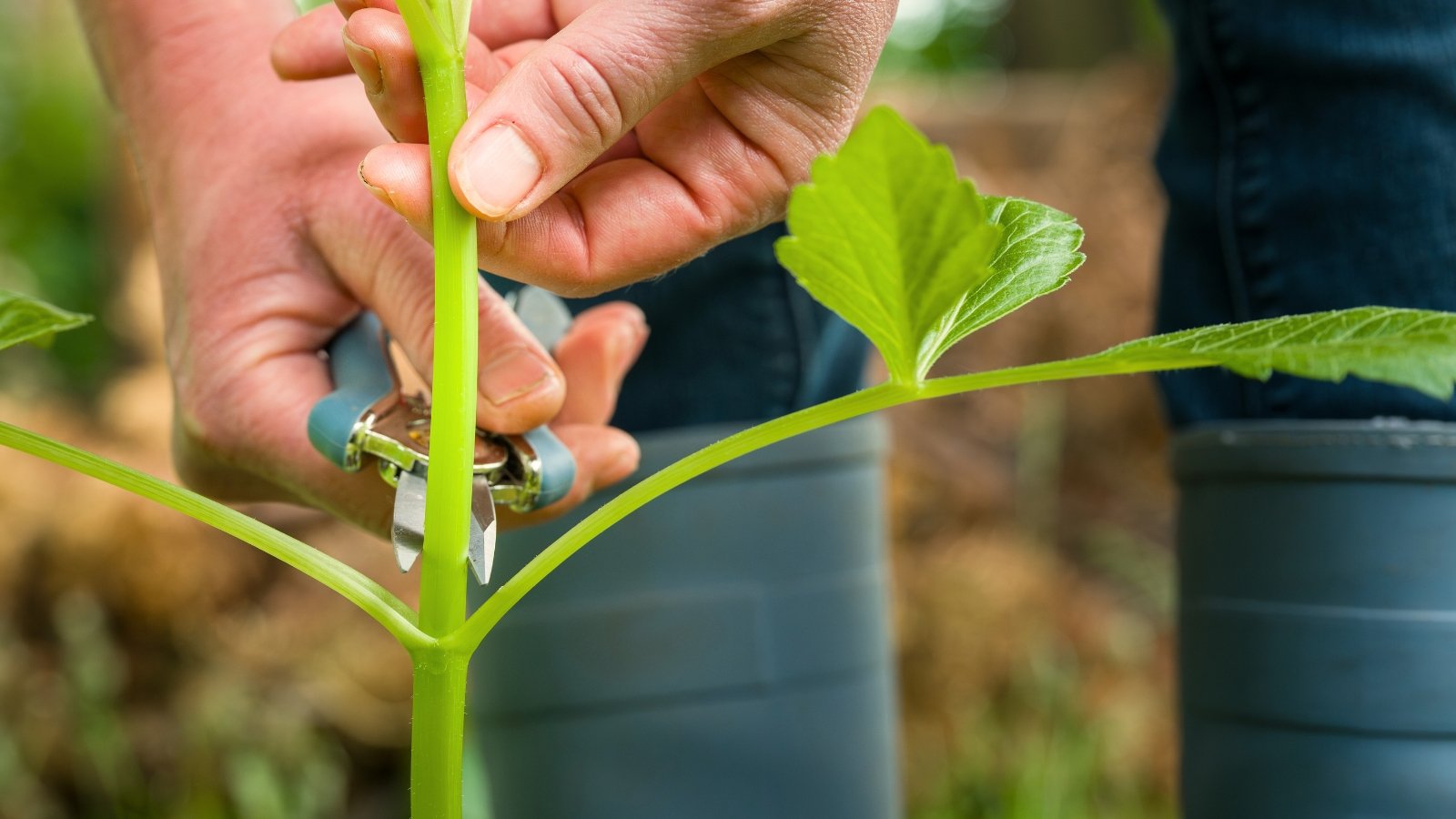 Trimming tips help keep blooms bigger and plants bushier.
Trimming tips help keep blooms bigger and plants bushier.Aim to pinch, deadhead, or harvest dahlias in the morning for the most resilient, water-filled stems. To clip for fresh arrangements, cut when the buds are fully (or nearly fully) open, as they don’t continue to open after cutting.
When using pruners, make sure they’re clean and sharp to avoid creating wounds and transferring pests and diseases. An alcohol wipe, spray, or dip in a 70% isopropyl solution does the trick.
Pinching
 Snipping tender tips creates a denser, more flower-packed form.
Snipping tender tips creates a denser, more flower-packed form.Pinching dahlias creates side branches with more stems for more buds and blooms. Pinching involves removing the growth tip from young plants to promote a strong, bushy form with a leafier habit.
To prune dahlias with pinching, start as early as one to two weeks after sprouting up to 12 to 18 inches tall. In spring, look for at least three pairs of leaves, and seek out the green tip of the central stem. Use your finger to feel for the growth tip and pinch it off beneath its full node.
New stems are thin, tender, and pliable for easy pinching. Pinching with your fingers lets us feel the point more clearly, but you can also use clean snips or pruning shears.
Besides improving strong growth and increasing flowering, pinching also creates a denser form that resists wind and flopping over. While tall varieties benefit from staking, directing the growth takes advantage of a well-rounded habit.
Pinching dahlias when they are smaller than 12 to 18 inches has advantages. It promotes side branching early on, getting those sturdy stems to develop close to the crown while young. It also limits the exposure of the hollow stem (once the growth point is removed) to water, disease spores, and pests. Let the perennials grow taller before pinching if you want taller plants.
Deadheading
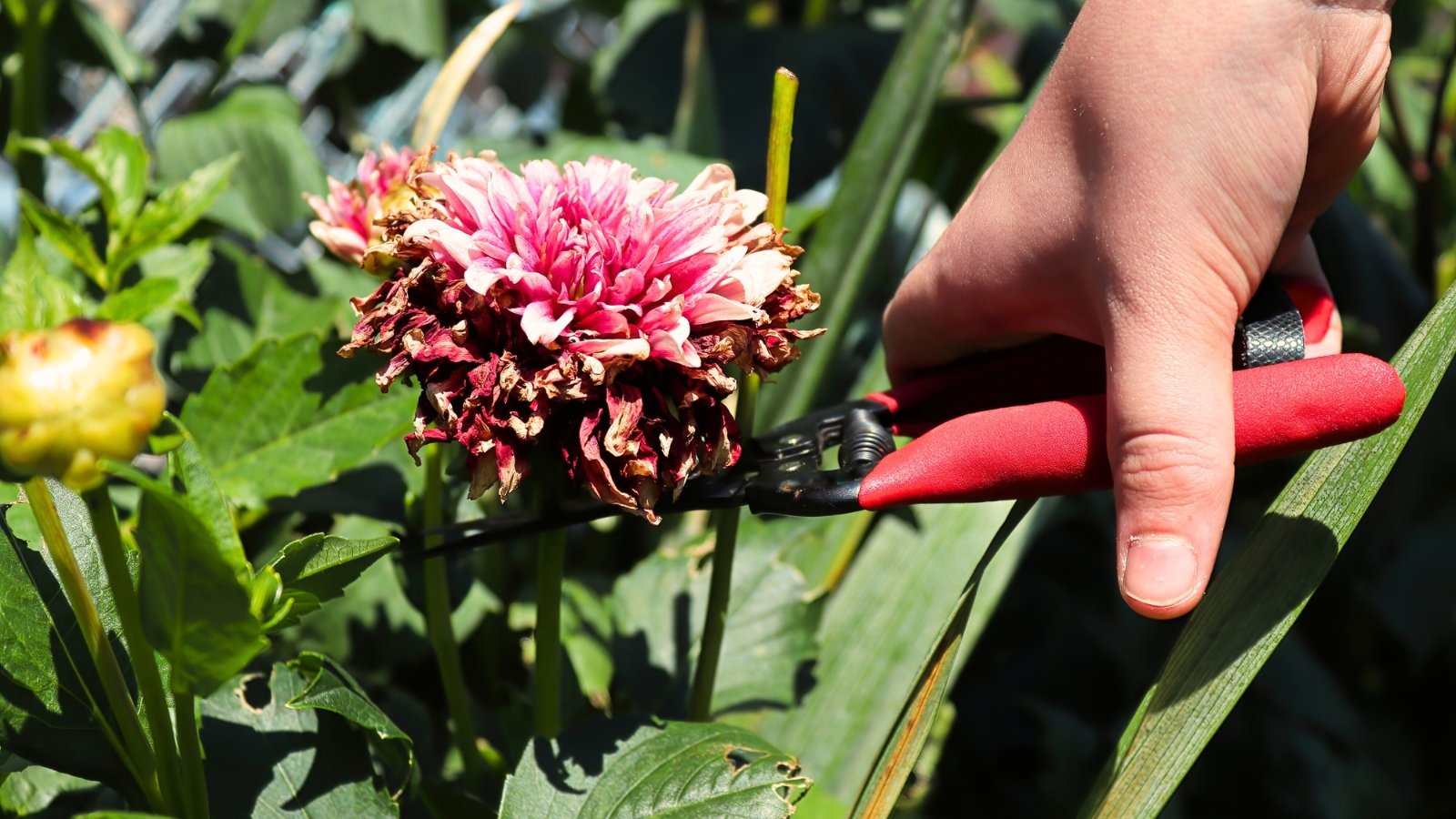 Cutting old blooms encourages new growth and longer flowering.
Cutting old blooms encourages new growth and longer flowering.Regular deadheading promotes more dahlia blooms, with less energy going into seed production. While not essential to growth, it is a common practice to support flowering, reduce diseases, and tidy the appearance. Removing spent blooms is one of the simplest ways to prune dahlias, encouraging a long-lasting season while fostering new growth and budding.
Deadhead when flowers begin to wither and lose their color. To deadhead, cut each flower as it fades, clipping the stem at the next healthy set of leaves or buds. Cut at an angle just above the node, and you’ll see new growth soon. At the height of the season, a deadheading sweep every few days keeps the blooms coming.
At the end of the season, leave some blooms on the stem to go to seed for collecting or for a surprise pop-up the following season. Because hybrids don’t grow true to type from seed, the offspring won’t necessarily reflect the parent plant. Seeding gives the opportunity for a totally new variety unique to your garden, as bees pollinate the dahlias on their garden travels.
If this surprise bloom is one you love, lift and store tubers over the winter for the next growing season.
Disbudding
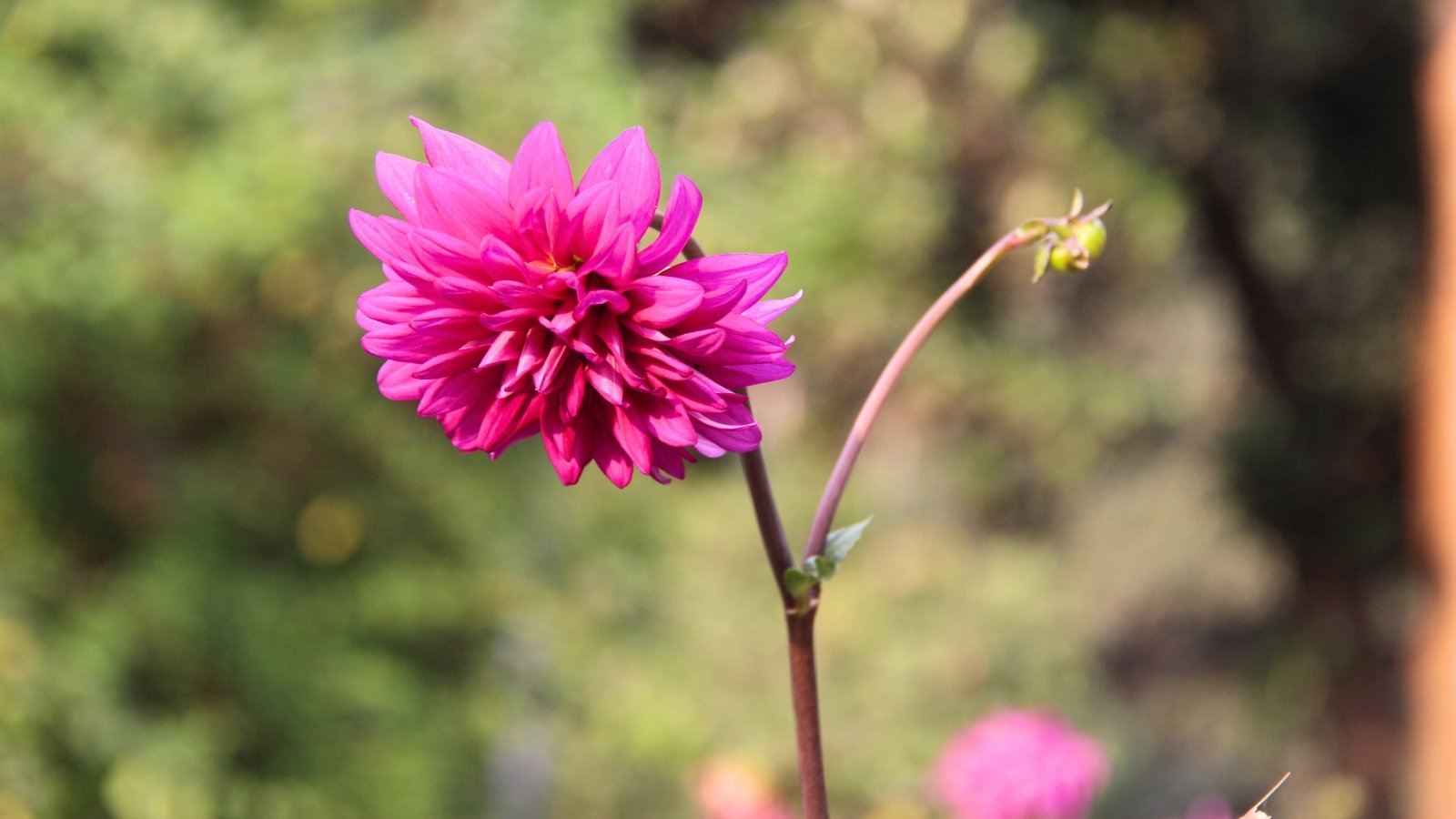 Taking off tiny buds early means a showier flower.
Taking off tiny buds early means a showier flower.Disbudding is a technique to prune dahlias that some gardeners use for display-quality flowers, especially in large-flowering varieties. Disbudding directs energy to the single, large buds and blooms rather than a series of less substantial ones.
Dahlias usually set three buds on a stem. Removing the two lateral buds and leaving the prominent one means it can soak up the energy for a larger bloom. Waiting too long or removing full buds won’t help redirect the energy in time, and late removal may slow down development.
To disbud, remove the buds when they’re the size of a pea. Easily roll them away with your finger when small for the greatest benefit, so resources aren’t spent developing a bud you intend to remove. Or, clip off a few lateral branches if your dahlia is particularly robust, leaving prominent ones for the flower display.
Without disbudding, you’ll have more buds and blooms ready to enjoy, even if not as prominent.
End of Season Cut Back
 Leaving a bit of stalk helps protect tubers during digging.
Leaving a bit of stalk helps protect tubers during digging.The last step to prune dahlias comes at the end of the season. After a few frosts, stems and leaves blacken and die back, and tubers harden off. Cut off the foliage for a clean bed and good garden sanitation heading into winter.
Post-frost is also the time to either dig the tubers for winter storage, protect them for overwintering, or toss them into the compost pile as annuals.
To dig dahlia tubers, wait until a few frosts pass to prevent storing them green, when they’ll shrivel quickly. Dig carefully to avoid damaging long roots or the tuber itself (they break easily at the eye). Leave a few inches of the stalk intact. Brush off dirt, rinse the tuber, and trim back roots. Allow tubers to dry overnight in a cool, dark place (40-50°F or 4-10°C) before storing.
Store tubers in boxes or crates of damp sand, vermiculite, newspaper, or wood shavings. The medium should be moist but not wet. Check them periodically to make sure they don’t dry out too much, and dampen the media to restore moisture.
To overwinter them in the ground in lower growing zones, insulate the dormant tubers with a foot of mulch protection (leaf litter, straw) and a waterproof row cover to prevent soggy conditions.
Frequently Asked Questions
Your dahlias will grow without pruning, directing growth and flowering into a central stem. They may not be as strong-stemmed and get tall or flop over with blooms on a primary branch (make sure to stake tall varieties). You’ll have fewer flowers than with side branching from pinching/topping, but you will get a prominent floral display from the main leader.
Plants don’t need deadheading to survive. They’ll bloom away without removing spent blooms. But, clipping the faded flowers redirects energy from seed production into the remaining buds and flowers during peak season. It also promotes faster reflowering and vigorous tubers.


 2 days ago
10
2 days ago
10
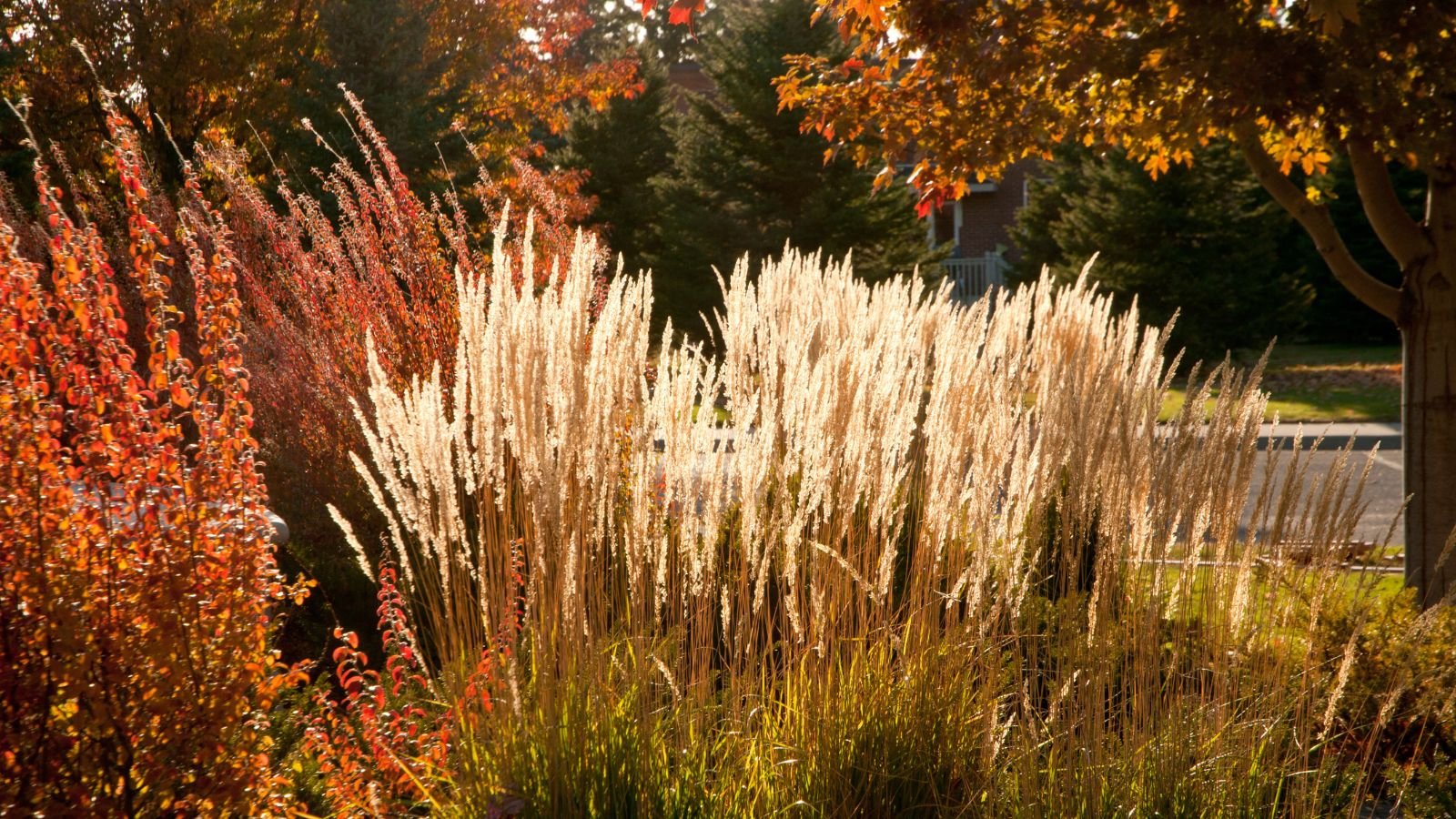




















 English (US) ·
English (US) ·  French (CA) ·
French (CA) ·